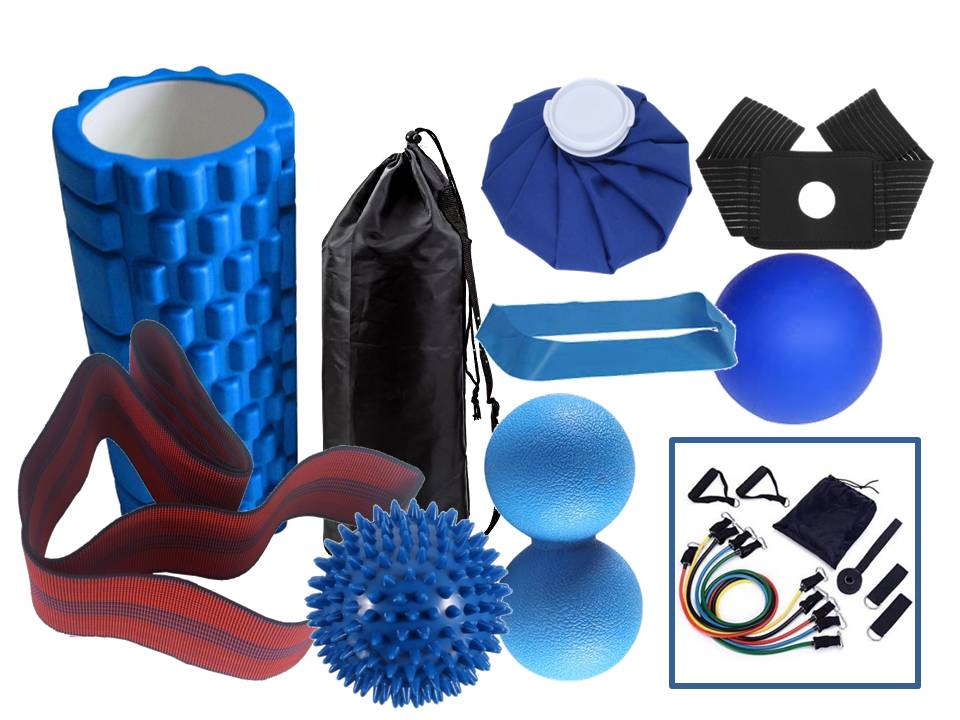Prehabilitation: A Proactive Approach to Injury Prevention
What is Prehab?
Prehab, short for prehabilitation, is a proactive approach that aims to prevent injuries before they occur. It involves exercises and activities designed to improve strength, mobility and stability in areas of the body that are most susceptible to injury. The goal of prehab is to reduce the risk of future injuries and improve overall athletic performance.
By focusing on your most injury-prone areas, prehab can help prevent chronic aches and pains that could potentially lead to surgery. A personalised prehab program should address total body balance and cater to specific needs related to your sport. It aims to balance range of motion (ROM), strength, mobility and stabilization.
Prehab should ideally be performed before your workouts and is not intended to replace your warm-up routine. For advice tailored to your specific needs, it’s always best to consult with a health practitioner, such as a doctor, physiotherapist, trainer, or sports therapist. The beauty of prehab exercises is that they can be done at home or at your training venue, so you don’t need to be at the gym all the time.
Why Do Athletes Need Prehab?
Athletes, due to their high levels of physical activity
and the demands of their sports, are at a higher risk of sustaining injuries. Here’s why prehab is crucial for them:
- Injury Prevention: Prehab exercises strengthen the muscles and joints, making them more resilient to the stresses and strains of athletic activities. This can significantly reduce the risk of injuries.
- Performance Enhancement: By improving strength, stability, and mobility, prehab can also enhance an athlete’s performance. It allows athletes to move more efficiently and effectively, which can translate into better performance in their sport.
- Faster Recovery: If an injury does occur, athletes who have been doing prehab exercises are likely to recover faster. Their bodies are better prepared to handle the rehabilitation process, leading to a quicker return to their sport.
Different Ways to Prehab
Prehab exercises are typically specific to the sport and the individual athlete. However, some general methods include:
- Strength Training: This involves exercises that target the muscles and joints that are most used in the athlete’s sport. For example, a runner might focus on strengthening the leg muscles and improving ankle stability.
- Mobility Exercises: These exercises aim to improve the range of motion in the joints. This can involve stretching, foam rolling and other techniques.
- Balance and Stability Training: This can include exercises on unstable surfaces (like a Bosu ball) to improve balance and proprioception, which is the body’s ability to sense its position and movement in space.
- Core Strengthening: The core muscles are crucial for almost all athletic movements. Strengthening these muscles can improve stability, balance and power.
- Sport-Specific Drills: These are exercises that mimic the movements and stresses of the sport. They help to prepare the body for the specific demands of the sport.
Remember, it’s always best to work with a trained professional, such as a physical therapist or athletic trainer, when starting a prehab program. They can provide guidance and ensure that the program is right for you.
 How to Prehab
How to Prehab
There are several products available for prehab, including foam rollers, massage balls, trigger point balls, stretching bands, resistance tubes and latex bands.
For your soft tissues, you can use a foam roller, massage ball, dual trigger point ball, or a trigger point ball to help release tight muscular areas in your body. These tools can break up scar tissue and muscle tension, increasing your range of motion (ROM) and improving the quality of your movements. Otherwise you should be getting more massages to keep your muscles loose.
Flexibility is crucial as stretching lengthens the muscles and allows greater blood flow to specific areas. You can use a stretching band or perform manual stretching. Consistent stretching can enhance your range of motion (ROM) and flexibility, enabling you to achieve maximum power with less stress on the muscle.
The final important phase of prehab is strengthening. It’s necessary to strengthen and activate specific muscle groups to ensure our body is coordinated and stable. The core and gluteus muscle groups are commonly targeted, but strengthening exercises can also focus on individual muscles that may cause specific problems. Resistance tubes with handles and latex bands are two common products you can use for these exercises.
In conclusion, to stay healthy and limit injuries, it’s essential to incorporate prehab exercises into your routine. While it’s nearly impossible to stay injury-free forever, an effective and efficient prehab program that targets your weakest points can minimize the likelihood of injury and even limit the severity of injuries if they do occur.

